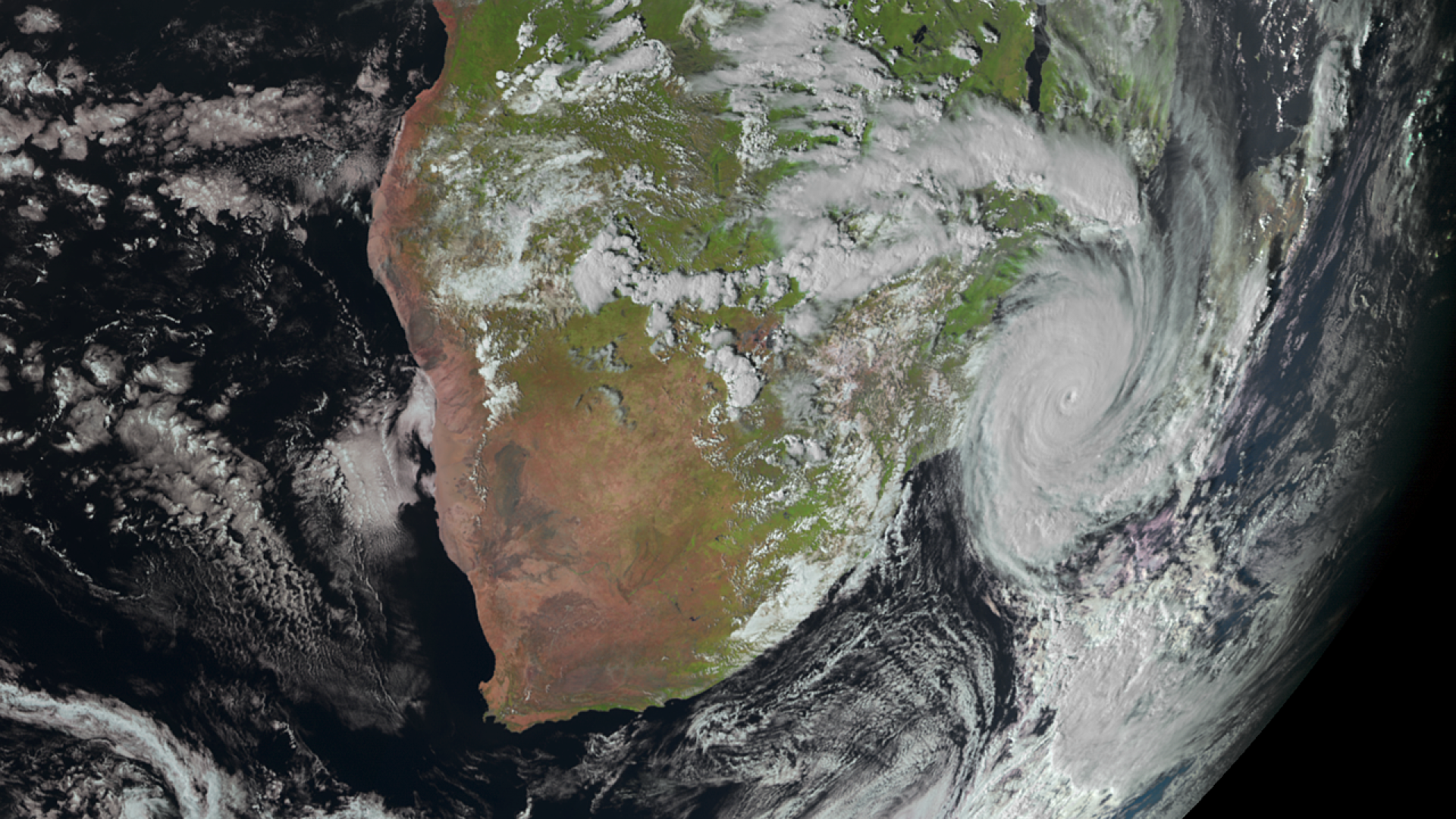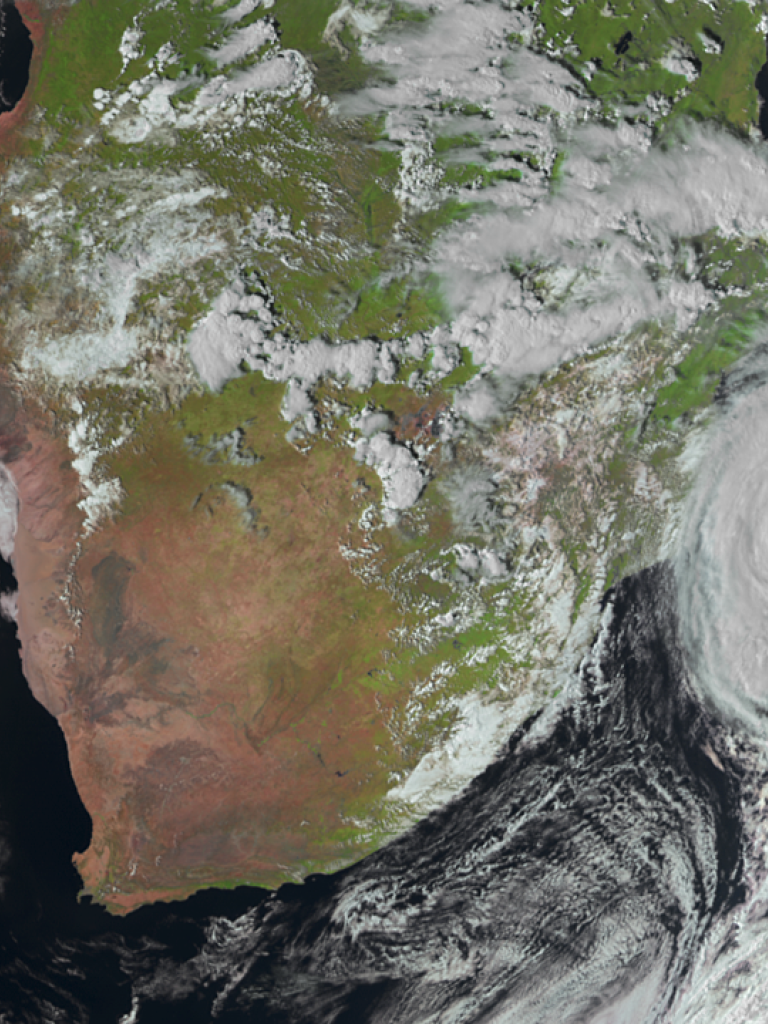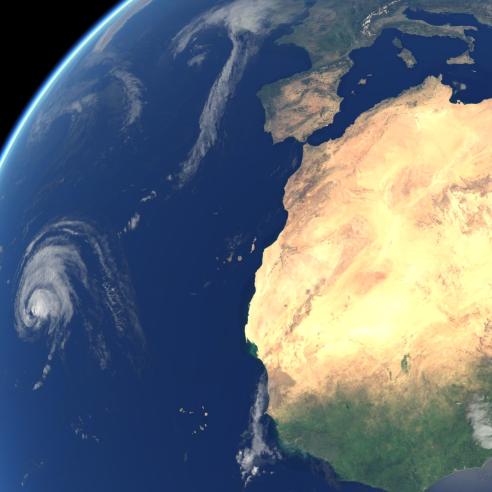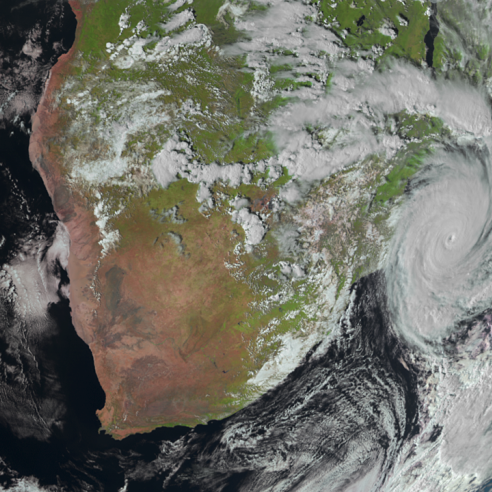17 May 2021
06 April 2020
Cooperation with Regional Technical Centres
EUMETSAT has established close cooperation with African regional technical centres, which have the mandate to undertake weather, climate and environmental monitoring in support of socio-economic policies in Africa (including agriculture, desertification, food security and water management). These centres include:
- the African Centre for Meteorological Applications for Development (ACMAD);
- the Centre Regional de Formation et d’Application en Agrométéorologie et Hydrologie Opérationelle (AGRHYMET);
- the Intergovernmental Authority on Development (IGAD) Climate Prediction and Applications Centre (ICPAC); and others.
Cooperation with Training Activities
EUMETSAT cooperates with four World Meteorological Organization (WMO) Centres of Excellence in Africa on training in satellite meteorology:
- the Direction de la Météorologie Nationale (DMN, Maroc Meteo), Casablanca, Morocco;
- the Ecole Africaine de la Météorologie et de l’Aviation Civile (EAMAC) of the Agence pour la Sécurité de la Navigation Aérienne en Afrique et à Madagascar (ASECNA), Niamey, Niger;
- the Institute for Meteorological Training and Research (IMTR), Nairobi, Kenya; and
- the South African Weather Service (SAWS) training centre, Pretoria, South Africa.
Cooperation with Policy Institutions
EUMETSAT is in contact with African policy institutions that provide necessary input into projects and initiatives and ensure that they are properly aligned with national, regional and continental policies. These institutions include:
- the African Union Commission (AUC), which is the executive and administrative branch of the African Union;
- the African Regional Economic Communities (IGAD, ECOWAS, IOC, ECCAS, CEMAC, SADC) and the Secretariat of the African, Caribbean and Pacific Group of States (ACP Secretariat);
- the African Climate Policy Centre (ACPC), hosted by the UN-ECA, which is contributing significantly to the ClimDev Africa initiative; and
- the African Development Bank (AfDB), which oversees the implementation of the Satellite and Weather Information for Disaster Resilience in Africa (SAWIDRA) projects.
African Centre for Meteorological Applications for Development (ACMAD)

Objective
To contribute to the sustainable development of African socio-economic sectors through the use of information related to weather, climate and environment.
How we work together
Cooperation between EUMETSAT and ACMAD started in 1996 and focuses on the use of Meteosat satellite data.
Due to its specific reference role at continental level, ACMAD was involved in the Preparation for Use of MSG in Africa (PUMA) project, providing technical assistance for the validation of the PUMA receiving stations and participating in the Project Steering Committee.
Centre Regional de Formation et d’Application en Agrométéorologie et Hydrologie Opérationelle (AGRHYMET)

Objective
AGRHYMET is a specialised institution of the Permanent Inter-State Committee for Drought Control in the Sahel ( CILSS ), with the mission of promoting information and training related to food security, desertification control and management of natural and water resources.
How we work together
The cooperation between EUMETSAT and AGRHYMET was established in 1996 and fosters the use of Meteosat data for operational and development activities, including rainfall estimates, training, and agro-meteorological and hydrological applications.
AGRHYMET was the reference regional centre for Western Africa on the PUMA project and is a Regional Implementation Centre in AMESD, responsible for the theme, “Cropland and Rangeland Management” in the Economic Community of West African States (ECOWAS) region.
Agence Pour la sécurité de la Navigation Aérienne en Afrique et à Madagascar (ASECNA)

Objective
ASECNA is an international organisation created in 1959. Its mandate ensures general air traffic safety for its 18 Member States, managing their air space and providing services for air traffic and aeronautical meteorology. ASECNA operates the Ecole Africaine de la Météorologie et de l’Aviation Civile (EAMAC) in Niamey, Niger.
How we work together
The close collaboration between EUMETSAT and ASECNA began in 1998 and aims at coordinating training activities on satellite meteorology for Africa, including the use of EUMETSAT data and products for educational purposes at EAMAC.
African Union Commission (AUC)

Objective
The AUC is the executive and administrative branch of the African Union, created in 1999. The main purpose of the African Union is to promote Africa’s growth and economic development by championing citizen inclusion and increased cooperation and integration of African states.
In December 2007, a Joint Africa-EU Strategy was approved during the EU-Africa Summit.
How we work together
EUMETSAT cooperates mainly with the African Union Commissioner for Rural Economy and Agriculture (responsible for climate, meteorology, disaster risk reduction and environment) and the Commissioner for Human Resources, Science and Technology (responsible for science and space activities).
Others
The Intergovernmental Authority on Development ( IGAD) Climate Prediction and Applications Centre (ICPAC) and the Southern African Development Community Climate Service Centre ( SADC-CSC ) are mandated to provide climate and seasonal forecasting services in their regions. EUMETSAT also cooperated closely with the ECCAS for the creation of the new Regional Climate Centre (the Centre d’Application et de Prediction du Climat pour l’Afrique Central – CAPC-AC) in Douala, Cameroon.



